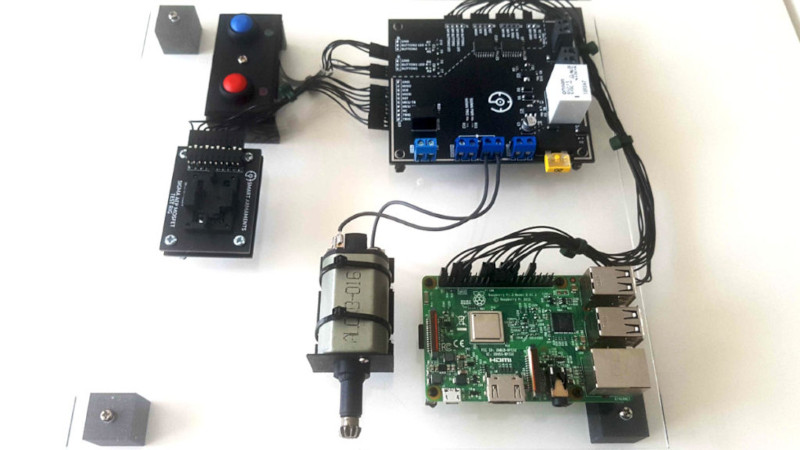It’s not unheard of for those who tinker in the land of electronics to suddenly find themselves with a project on their hands and potential customers clamoring at the door. Of course, the road to shipping a product is a long one, and requires a unique set of skills quite distinct from those required to build the initial prototype. In developing a product for Airsoft use, [bald greg] realized that a testing rig would be key to ensuring their hundreds of units left the building in working condition.
When shipping units in the hundreds rather than thousands, keeping overheads low is key to maintain a sustainable profit margin on each unit sold. Thus, [bald greg] built a rig that would allow for effective testing of devices rather than breaking the bank. The rig also handles programming, saving the cost of purchasing pre-programmed microcontrollers from the manufacturer. A Raspberry Pi runs the show, using its GPIO pins to program boards and saving test results and serial numbers for later reference. A bed of nails fixture is used to connect to each individual board. Additionally, to test each board as realistically as possible, hardware mimicking a real Airsoft electric pistol is used to properly load the hardware.
[bald greg]’s work is a great example of approaching QC on a budget, and we suspect he’ll sleep soundly knowing the boards in the mail are going to work first time. We’ve seen others take similar approaches, too. If you’re working on your own production testing rig, be sure to let us know!

















Nice topic.
In his post, he mentions that the small 1mm test pads are problematic for probe testing.. What I’ve done in the past is give a test pad a very small diameter metallised hole anyway, which a sharp point test pin will slide into partially to locate it better.
“Design For Test” was first used for Integrated Circuits, but is a valid method for design. Now that you have some units that maybe did not pass, you have an idea of what to test for besides functionality. Ideally, simply powering on a board would cause a self-test to occur. Can’t be more specific with just your black-box device. https://www.dsiintl.com/solutions/improve-diagnostic-capability-system-design/influence-design-dft/design-test-dft-vs-design-testability-dft/